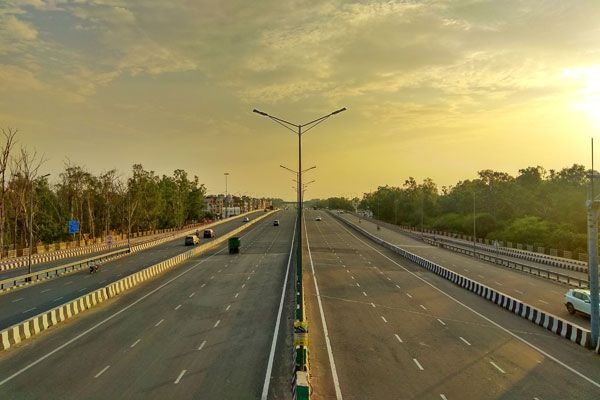The Comptroller and Auditor General (CAG) has raised concerns over the budget overrun in the ambitious Dwarka Expressway project, a significant component of the Centre’s Bharatmala Pariyojana Phase-1. This revelation comes as the government’s top auditor points out that the amount spent on the project has surged past the allocated funds by a staggering 14 times.
According to the CAG report, the 14-lane national highway project, which received approval from the Cabinet Committee on Economic Affairs (CCEA) in 2017, comes with a substantial per kilometer cost of ₹250.77 crore. This significant financial discrepancy is in stark contrast to the initial cost approved by the CCEA, which amounted to a mere ₹18.20 crore per kilometer, as reported by NDTV.
The Dwarka Expressway was envisioned to mitigate the congestion on NH-48 between Delhi and Gurugram. The Ministry of Road and Transport defended the elevated corridor’s elevated costs by emphasizing its design featuring minimal entry and exit arrangements.
In response, the ministry stated, “Dwarka Expressway was decided to be developed as an eight-lane elevated corridor with minimal entry exit arrangements to allow smooth movements of inter-state traffic.” However, the CAG has expressed reservations about the rationale put forth by the ministry, further highlighting the cost discrepancies.
Notably, the project initially originated from the Gurgaon-Manesar Urban Construction Plan-2031 under the Haryana government’s purview. The Haryana government had initially planned for a 150-meter right of way, incorporating a main carriage way of 25 meters and a dedicated 7-meter wide corridor for trunk services. However, the project’s progress under the Haryana government stagnated, leading to its eventual approval under the Bharatmala Pariyojana Phase-1.
The CAG report underscored the significant deviations from the original plan, noting that a 14-lane national highway at grade only required up to 70-75 meters of right of way. This raises questions about the rationale behind planning an eight-lane elevated main carriageway and a six-lane at grade road, considering the existing 90-meter right of way already possessed by the National Highways Authority of India (NHAI).
The report further revealed that due to the expansive structures, the project’s construction under the Engineering, Procurement, and Construction (EPC) mode cost ₹7,287.29 crore for a length of 29.06 kilometers. This translates to a per-kilometer civil construction cost of ₹250.77 crore, significantly higher than the approved ₹18.20 crore per kilometer sanctioned by the CCEA.
The CAG’s scrutiny of the Dwarka Expressway project underscores the importance of transparent project planning, allocation, and execution, especially in large-scale infrastructure endeavors. The discrepancies highlighted shed light on the need for effective oversight and responsible financial management to ensure that taxpayer funds are used judiciously.
